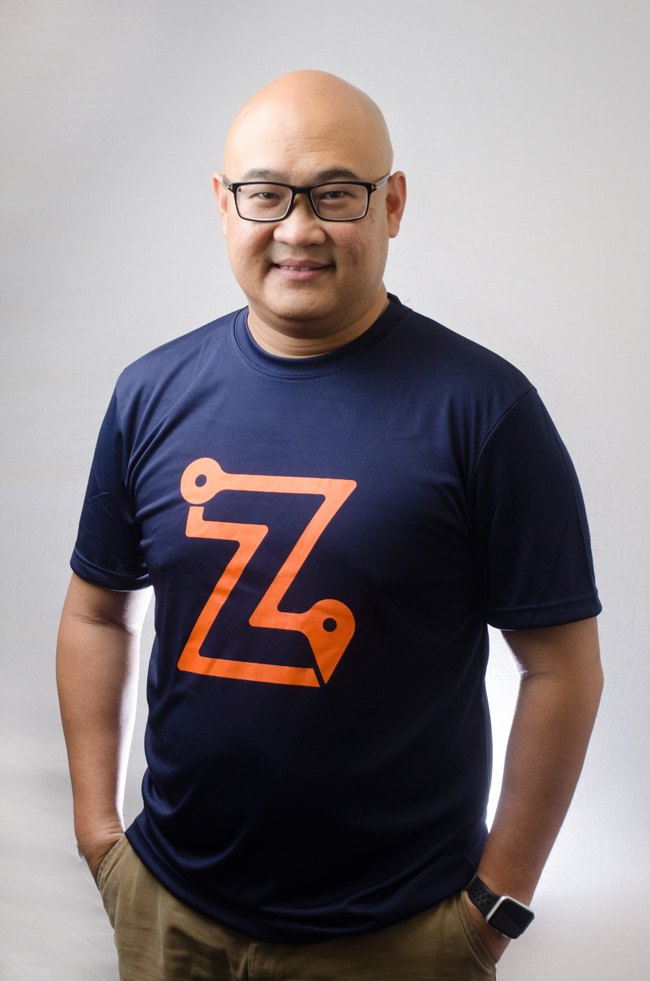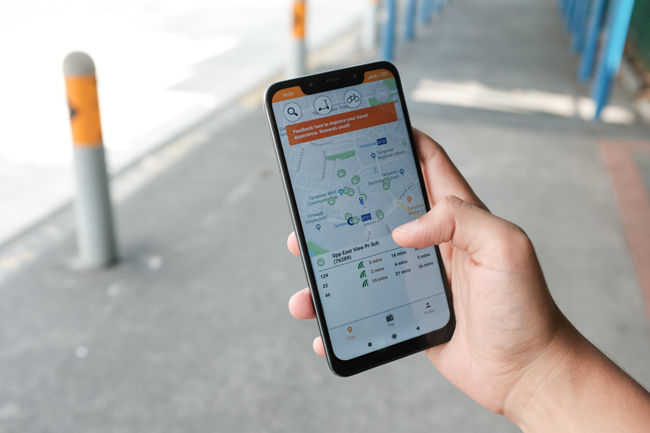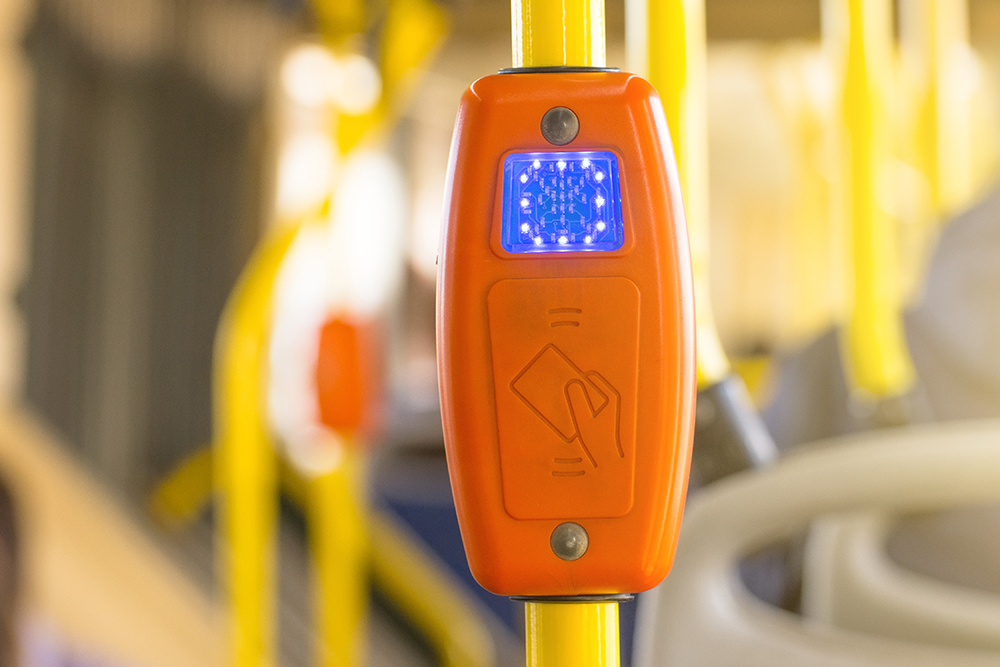
Within the ITS community Singapore is known for its trailblazing of many transport-related innovations – which now includes Mobility as a Service (MaaS) – and Juniper Research has crowned it ‘the world’s smartest city’. But to understand why this has happened, readers must appreciate the unique circumstances of a city state that covers only just over 720km2 - including more than 60 islets. Measuring just 50km (east to west) by 27km north-south, the main island is home to four million people.
It was a ‘late starter’ too, as Singapore became a sovereign state only in 1965 but has made up ground rapidly to become a global hub for finance, innovation, logistics, manufacturing, technology, tourism, trade and transport. Today, it has the world’s third largest GDP per capita.

As a country, Singapore has around 5.6 million inhabitants, which equates to a population density of almost 7,800 people per km2 - and makes it the second most densely populated nation in the world (behind Monaco). While in city terms that is not densely populated, Singapore is an island so there is no hinterland in which to locate an airport or bus and train depots or even to build an outer ring road. There is nowhere outside of the city to locate delivery hubs or industrial areas (albeit one of the islands is home to an oil refinery) – so everything has to be within the city itself and space is at a premium.
Growing congestion
After independence it soon became apparent that moving people and goods around efficiently was both essential in such a confined area and central to creating a diverse and viable economy in Singapore. But as the economy grew, so did traffic congestion. Within a decade of independence an area licensing scheme (ALS) was introduced - initially in a restricted zone – before subsequently being extended to a road pricing scheme on major expressways.
By 1990, it was clear to Singapore’s government that building more roads was not the solution to increasing congestion, so it introduced a quota system to limit the number of vehicles able to travel (see The price of driving).
In 1998 Singapore introduced electronic road pricing (ERP), and rates for a car are currently set at between S$0 and S$3 (US$2.2) depending on the time and day of travel. Motorcycles are charged at half the car rate while buses and goods vehicles pay 1.5 times.
Getting around Singapore
Singapore LTA sets itself ambitious targets (including 700km of cycle track by 2030) and its record is impressive. In 2013 when just over half (57%) of households were within a 10-minute walk of a train station, it set a target to raise that to 80% by 2030. Currently the figure stands at 64% with 100km of line being added in the next decade with three lines being built, extended or upgraded. With a feasibility study on an additional line in the north and north-east regions, there is every chance that target will be met.
Another 2030 target is for 75% of peak-hour trips to be made by public transport from 67% now (63% in 2012) and that 85% of public transport trips of less than 20km to be completed within an hour (currently 79% and 76% in 2012). On-demand services and driverless shuttles are currently being trialled.
At peak times the charge can change every half hour and ERP rates are reviewed once a quarter with the aim of maintaining a minimum speed on arterial roads of 20-30km/h and 45-65km/h on expressways. To discourage motorists from speeding up or slowing down to avoid paying higher ERP charges, bigger changes (more than S$1) have been made gradual, using two changes five minutes apart.
Currently the system uses an on-board unit (OBU) with a pre-funded ‘cash card’ from which the charge is deducted and by 2020 a global navigation satellite system (GNSS)-based ERP system will be operational. With that comes the opportunity to charge for using each and every road throughout the state.
Despite limiting the number of vehicles on the road - and a very high cost of owning and driving a car - traffic congestion remains a major problem and Inrix ranks Singapore as the world’s 14th most congested city. A typical Singaporean driver will spend 105 hours a year stuck in traffic.
Unsustainable solution
However, road building does not figure significantly in the Land Transport Authority’s (LTA’s) plans as is clear from its chairman’s statement in the 2018 annual report: “Some may question why we aren’t expanding our road network to cope with increasing demand for vehicular movements. But this is an unsustainable solution, as roads already take up 12% of our total land area.”
Instead, investment has systematically been directed towards improving and expanding public transport which currently carries eight million passengers per day. The government has adopted a user-centric approach to make services more easily accessible to both residents and tourists alike. As part of that thrust, in September 2016 the LTA implemented a bus contracting model under which it owns all the assets (vehicles and depots), plans services, sets standards and retains fare revenue while the bus operators bid to run packages of routes.

Currently there are four public bus operators – SBS Transit, SMRT Buses, Go-Ahead Singapore and Tower Transit Singapore – the last two starting their operations in the city with the transition to the bus contracting model. Since 2016, the bus fleet has increased by 96, with 15 new services added, and 75% of the bus services are less crowded in peak hours. Singapore also has ambitious targets in areas such as increasing cycling participation and train use (see Getting around Singapore).
In short, a more MaaS-friendly environment would be difficult to find and, almost inevitably, the world’s smartest city has a MaaS app. Initially called Jalan Jalan during trials on a university campus, the app was renamed Zipster for beta testing and by the time ITS World Congress 2019 opens, it will be in full service. Zipster is the product of Singaporean start-up company MobilityX which was seed-funded by the country’s leading rail operator SMRT.
Zipster mobility
Colin Lim, Zipster’s creator - and CEO of its parent company MobilityX - is a veteran of Singapore’s Ministry of Transport, its LTA and also of IBM and he was working at SMRT when he first devised what was to become Zipster. He sees the increasing use of the word mobility, rather than transport, as being a fundamental change: “The world of transport is about assets and infrastructure. People have to revolve around that infrastructure - to walk to the bus stop or station and wait for a bus or a train. Uber turned that on its head and said ‘let’s take the assets to the user’.”
For a rail company such as SMRT where Lim was working, that is not possible so he started work on ways to coordinate other modes in order to be able to offer end-to-end transport. With some of the groundwork done and seed funding from SMRT, the fledgling service provider was spun off as a start-up called MobilityX and now has Toyota Tsusho as its lead investor.
Zipster provides a single point of access to all modes of transport across the main island from the train, metro and bus companies to privately-owned services such as taxis or car-, bike-. scooter- and even bus-sharing. As Singapore is served by several trip-planning providers (such as Citymapper, Google Maps and Here WeGo), it was not necessary to duplicate the process.
In addition, as mentioned above, the LTA owns all the assets of the train and now the bus companies, timetables their operations and pays the operators. In negotiating a deal directly with the authority, MobilityX automatically encompasses all public transport operators and gains access to their application programming interfaces. Users can plan trips, view real-time information such as next arrivals and crowding levels - but there is no need to book and payment can be made either by the account or the contactless Zipster card (Z card).
The price of driving
With the number of vehicles in Singapore inexorably increasing, in 2010 a bidding system was introduced. Those wanting to register a vehicle must now bid for an available Certificate of Entitlement which is valid for 10 years. Currently these are averaging around S$26,500 ($19,170 US) for smaller cars and S$39,000 ($28,200) for larger ones. In boom years these prices have approached S$70,000 ($50,600) and S$80,000 ($57,800) respectively.
Vehicle numbers peaked at 932,000 at the end of 2011 and the figure has subsequently dropped to 904,500 at the end of 2018. Currently the number of cars and motorcycles that can be registered is frozen while buses and goods vehicles can increase by 0.25% per year.
Payment systems
Furthermore, as the Z card works on the same platform as the current EZ-Link payment system, MobilityX can utilise existing channels to ensure public transport operators receive their portion of the revenue from multimodal journeys. Indeed, the Z card moves beyond EZ-Link’s pre-pay model with an account-based digital wallet enabling a pay-as-you-go function. Incentives and discounts can also be made available for account holders.

Privately owned transport services such as the taxis or bike-, scooter- and car-share, are deep-linked through the app so those wanting access to first/last mile options are diverted to the individual website to summon a cab or reserve a bicycle. Once a shared mobility option is reserved, the app is used to scan a QR code and release the bike or scooter from the dock - with payment being made retrospectively and through the credit card registered to the user’s account.
While this is already a slick MaaS app and operation for a tech-savvy city, Lim says Zipster is going further and developing a tactile screen where pictures of up to six user-defined destinations can be entered. When the user taps the icon, the app will automatically calculate their travel options to that destination – a level of user-friendliness that could help the less tech-savvy, older users and even those with a degree of disability or dementia, to access the new mobility system.
Subscription services
Singapore’s exemplary transport network (public and private) means that offering a new product or service attractive enough to gain a sizeable number of users is challenging – but Zipster is making its mark. More than 6,000 Singaporeans downloaded the app and it was used more than 70,000 times during its first 100 days of beta testing. Five months in, and Lim says those figures have grown to 12,000 and 120,000 respectively.
Where now? Having started with a pay-as-you-go service with post-payment via a registered credit card, Lim says that when the system has settled in and more analytic information is available, MobilityX will seek to introduce subscription services.
The company is also setting its sights beyond Singapore, potentially exporting the system around the globe and Lim is well aware that the city’s MaaS-friendly conditions will not be reflected elsewhere. “In most cities the implementation of MaaS requires overcoming many legal challenges for every mode you want to include and any MaaS platform will have to cover these hurdles,” he concludes.
Try Zipster yourself
Zipster is the official MaaS app of the ITS World Congress 2019. Delegates will be encouraged to download the app and will receive a Z card pre-loaded with S$8 which they can use as they wish (public transport to the airport costs around S$1.8 - equivalent to US$1.3).
To illustrate the new tactile function, icons for the conference centre and some tourist destinations will be pre-entered, allowing delegates space to add their hotel and a destination of their choice. After delegates have sampled Zipster, they can put questions to MobilityX during the congress and even directly to Colin Lim who will be presenting two papers.











